Photographs: Rupak De Chowdhuri/Reuters. T N Ninan
A lot of people are exercised over the Planning Commission's definition of poverty - monthly income in the cities of Rs 965 per head (less in villages).
There has been incensed comment about the inadequate provision for the consumption of items like milk and eggs, school fees and medicines....
Who is 'poor' in India?
Image: Three-year-old Babu, a child of a migrant labourer outside a makeshift tent along a road on a cold morning.Photographs: Parivartan Sharma/Reuters.
The official poverty line, which goes back 40 years, focused on a single parameter - what it would cost to get the minimum calorie intake.
But notions of even "absolute" poverty change, as societies become less poor; the Tendulkar committee report commissioned by the Planning Commission was one response.
Who is 'poor' in India?
Image: A handcart puller walks past the house of Railways Minister and Trinamool Congress (TMC) chief Mamata Banerjee in Kolkata.Photographs: Rupak De Chowdhuri/Reuters.
Indeed, since 70 per cent of homes now have TV sets, even some TV-owners may be counted among the poor.
Who is 'poor' in India?
Image: A homeless man sleeps under a flyover as a herd of goats and sheep pass him during a hot day in Kolkata.Photographs: Rupak De Chowdhuri/Reuters.
We have come a long way from defining poverty as just calorie intake. That is only logical after 40 years in which per capita income has more than quadrupled.
The current ferment is an opportunity to reset the poverty debate, in two ways. First, the focus of poverty measurement has to move from the individual to the family, because the operational unit for living costs is the family, and costs per head are lower for larger families.
Who is 'poor' in India?
Image: Homeless people prepare food on a roadside during the early morning in Ahmedabad.Photographs: Amit Dave/Reuters.
Second, poverty is now relative and not absolute - if you accept the bicycle and TV argument. If so, India should adopt the European approach, which says you are poor if your income is lower than 60 per cent of the average level.
Who is 'poor' in India?
Image: A homeless boy goes through a checkup by a doctor inside a shelter for homeless women and children managed by a NGO.Photographs: Adnan Abidi/Reuters.
Who is 'poor' in India?
Image: A family carries their belongings in a cycle rickshaw after they salvaged them from the debris of demolished shanties.Photographs: Parivartan Sharma/Reuters.
The problem is that there are no reliable income distribution statistics in the country, but a very rough-and-ready projection from the National Council for Applied Economic Research survey numbers suggests that the median five-member Indian family's monthly income would be in the region of Rs 12,000, give or take a bit.
Who is 'poor' in India?
Image: A mother looks at her malnourished child in the Nutritional Rehabilitation Centre of Sheopur district.Photographs: Reinhard Krause/Reuters.
Who is 'poor' in India?
Image: A slum dweller cries after her house was demolished by local authorities at a slum area in Chandigarh.Photographs: Ajay Verma/Reuters.
In Germany, it works out to about 15 per cent poor.
Who is 'poor' in India?
Image: A woman sits on empty water buckets to be filled with drinking water that will be distributed by a water lorry.Photographs: Arko Datta/Reuters.
In India, the poor might number between 30 per cent and 40 per cent of the total.
Such a definitional "cap" would ensure that benefits meant for the poor go to the really poor, not to others who might be considered poor by flawed identification processes; keep in mind that some not-so-poor states have issued BPL cards that cover 80 per cent of the total families in the state.
The poverty industry has its own rackets, and if public money is to really go to the poor, we need realistic definitions based on proper data.



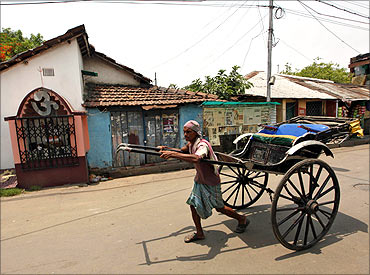
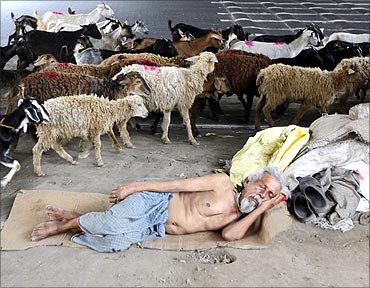
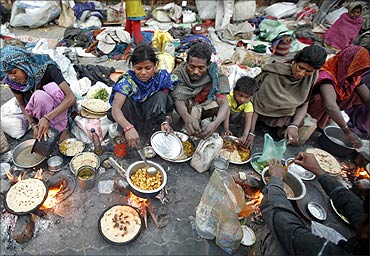
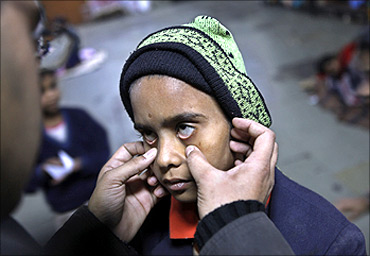
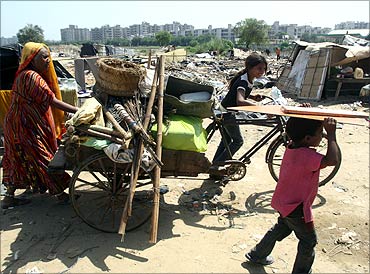
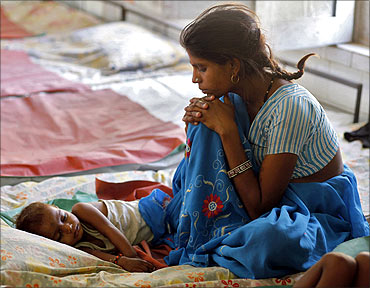
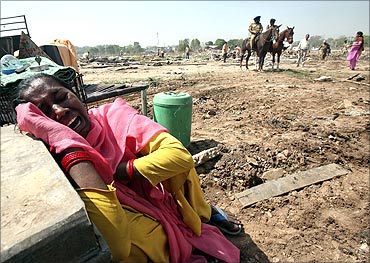
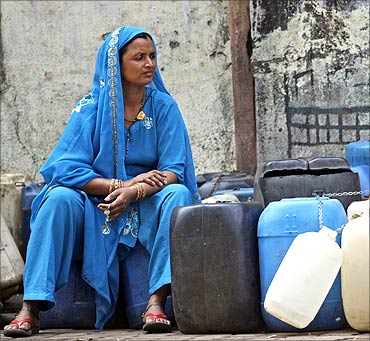

article